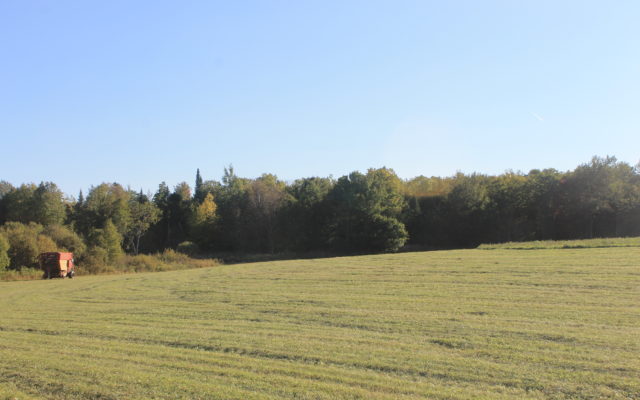
PRESQUE ISLE, Maine — More than 130,000 acres of fields are tended for hay in Maine, including thousands of acres in Aroostook County in rotation with potatoes, and the last three dry summers have put a strain on this traditionally low-input crop.
“Hay is one of the largest crops in Maine,” said Richard Brzozowski, food system program administrator with University of Maine Cooperative Extension.
Brzozowski oversees the Maine hay directory for hay buyers and sellers, and works with dairy and livestock farmers and hay growers. He said that the last three summers were drier and warmer than average across the state, and that’s created some new challenges for farmers tending hayfields, including reduced production and new weed pressure.
“We’ve had three relatively dry summers in a row statewide. Most of the grasses in hayfields are cool-season grasses. When we have a dry year, they tend to dry up.”
In northern Maine, as in other parts of the state, a weed known as bedstraw is causing a fair amount of headache as it takes the opportunity of dry weather to spread and reduces the overall quality of the forage.
“I get 10-15 calls a week from people concerned about bedstraw,” Brzozowski said.
“Once the bedstraw is there, it’s going to stay there. Once you’ve got it, it’s how you control it. It spreads by seeds and it flowers in mid-June.”
While getting rid of the weed may be impossible, it can be kept at bay or prevented through a range of strategies, including keeping the soil pH above 6, mowing fields before it seeds, and seeding legume species into the hay mixture with grasses, which can also help with dry conditions.
“If you add legumes like clover and alfalfa, they have a deeper taproot and can do better in drier weather,” Brzozowski said.
Most Maine hayfields will get at least two cuttings of hay during the summer, or three and sometimes four.
“It’s one of those crops that varies in terms of types of inputs. There’s a lot of livestock farmers that decide it’s easier to buy all this hay rather than cut it themselves. In central Maine, hayfields aren’t managed as intensively as they used to be.”
In some years, there may be a hay shortage, while in others, hay may be exported out of the state, Brzozowski said. In Aroostook County this summer, some farmers and livestock owners with decreased hay production worked with neighbors and with representatives of Soil and Water Conservation Districts to find fallow fields that they could cut for hay to make up the difference.
Brzozowski said that farms with hay for sale can list their inventories on the Maine hay directory, and that those who need hay can use it to find forage for their animals
However, he cautioned that because of the dry summer scammers have sensed an opportunity.
“There have been some scam attempts from out of state. Make sure you check before you buy.”
- A hay baler rests in a field at Four Corners Farm in Westfield after harvesting a final cutting of hay in late September. (Anthony Brino)





